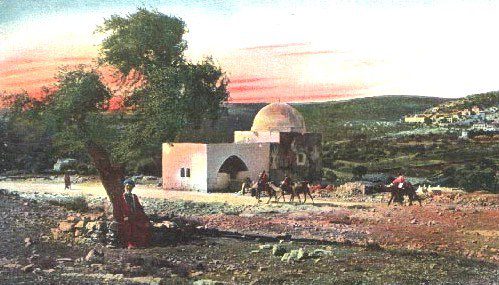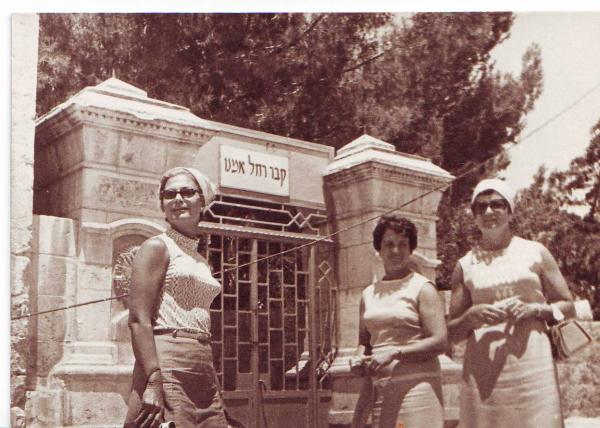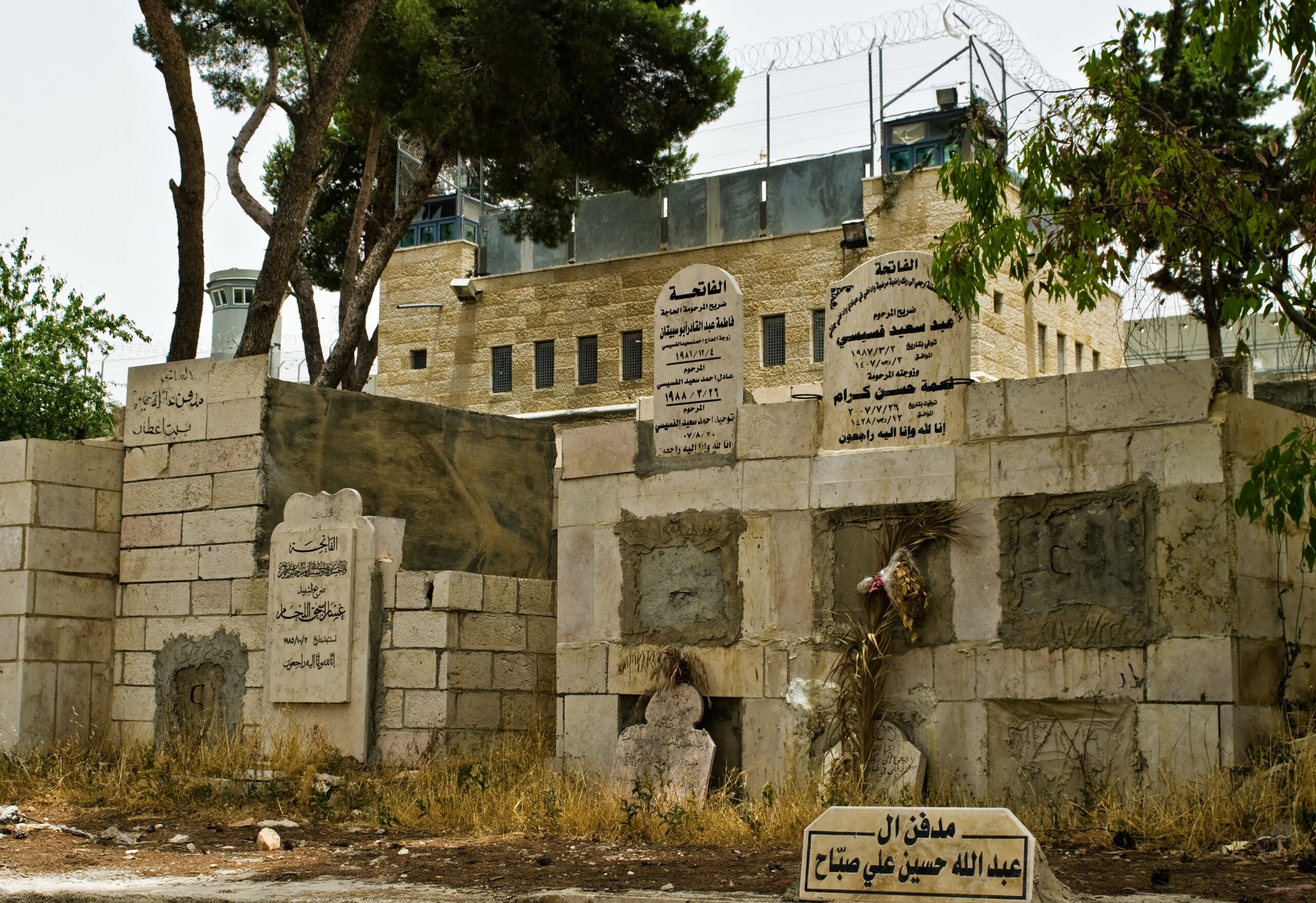After Abraham purchased the field of Ephron the Hittite in Hebron, and after Abraham, Sarah, Isaac, and Rivkah in the Machpelah Cave, it was expected that Jacob and his wives would also be buried at the site. So it was surprising that when Rachel passed away while giving birth to Benjamin, her second son, she was buried on a lonely roadside near Ephrath. Commentaries note that this sadly mirrored her marriage canopy, under which Leah, who was eventually buried next to Jacob, took her place.
Rachel died soon upon arriving in Israel since being married to two sisters is explicitly forbidden in the Torah. This Torah prohibition was only incumbent upon the Patriarchs inside Israel and not outside of the holy land, and so Rachel died when Jacob returned to the Land of Israel with his family. Rachel, a prophetess, knew this when she agreed to permit her older sister to marry Jacob, thereby giving the ultimate sacrifice in order to be a mother.
Where is the tomb of Rachel?
The Bible goes on to describe Jacob erecting a monument at the site. The traditional site of the tomb of Rachel now stands in Bethlehem, part of the ancient map of Israel, adjacent to the modern city of Efrat.

What is the significance of Rachel’s tomb?
The commentators explain that Rachel was intentionally buried there, in Bethlehem, on the side of the road on which the Jews were forcibly marched into exile following the destruction of the first Beit Hamikdash. This was in order that they would be able to pray at her grave for their salvation.
According to the Sages, the first person to pray at the tomb Rachel was her eldest son, Joseph, who was only seven when his mother died. When he was 17, his brothers sold him into slavery. As he was being carried away to Egypt, he broke away from his captors, ran to his mother’s grave and cried to her: “Mother, my mother who gave birth to me, wake up, arise and see my suffering.” “Do not fear,” he heard his mother answer. “Go with them, and God will be with you.”
In the tradition of Joseph who was taken into exile as a slave, Rachel, more than any of the other Biblical figures, is connected to the exile and return to Zion. The solitude of Rachel’s burial site, and her identity as a yearning mother, gave the people of Israel fortitude as they passed by her on their way to exile, reassuring them that God would keep his promise to return them, as expressed in Jeremiah 31:14-16:
According to the Sages, at the time of the exile, the other patriarchs, matriarchs and Moses, too, begged for mercy. But G‑d remained silent. Then Rachel lifted her voice and elicited the promise of redemption. Based on this depiction of the prophet Jeremiah, Rachel has been given the title “Mother Rachel,” or “Mamma Rachel.”
According to the Zohar, the Messiah will ultimately lead the returning Jews along that same route, again passing Rachel’s grave as they are led back to their land and thus fulfilling the continuation of Jeremiah’s prophecy.
Today, Rachel’s Tomb, considered the third holiest site in Judaism, has become a pilgrimage site for men and women to pray, especially women who, like Mother Rachel was for so many years, are childless. In the fifth century, a small structure composed of a small dome held up by four beams was erected at the site. In 1841, Sir Moses Montefiore and his wife (who, like Rachel, was childless) added walls to the dome and added a long room as a shelter for visitors to the lonely site.
When his wife passed away, Montefiore built a structure next to her mausoleum in Ramsgate, England that was identical to the one he built at Rachel’s tomb in Israel.
In the 1948 War of Independence, Jordan illegally occupied Judea and prohibited Jews from visiting the site. The Arabs built a cemetery around the site and the city of Bethlehem expanded, encompassing the tomb.
After the Israeli victory in the 1967 Six-Day War, Jews once again traveled the short distance from Jerusalem to pay homage to their matriarch.

After the First Intifada and as per the Oslo Accords, the administration of Bethlehem was turned over to the Palestinian Authority but the Israeli Government retained control over the holy site.
According to several accounts, control of Rachel’s Tomb was supposed to be included in the deal, under full Arab civil and military control, which would have prevented Jews from visiting the site. Upon seeing this, Knesset Member Chanan Porat decided that he must speak with Rabin in the hopes of changing his mind. As Porat was walking to Rabin’s office, Knesset Member Rabbi Menachem Porush asked him where he was going. Hearing that Porat was about to fight for Rachel’s Tomb, Porush asked to join in the meeting. At Rabin’s office, Porat was diligently explaining the ins and outs of the security situation at the Tomb and making rational arguments that did not seem to move Rabin.
According to the accounts, Rabin looked at Porush and saw that he was crying. Porush held Rabin’s hands and with tears streaming down his face, said: “Yitzchak, it’s Mother Rachel, Mamma Rachel.” At that moment Rabin’s heart opened, and he altered the map so that Rachel’s Tomb would remain in Jewish hands.
In 1996, in the face of unremitting Arab attacks, Israel’s Ministry of Religion built a fortress around the tiny structure, with two guard towers, three-foot thick concrete walls, and barbed wire.

The Torah Ark in Rachel’s Tomb is covered with a curtain made from the wedding gown of Nava Applebaum, a young Israeli woman who was killed by a Palestinian terrorist in a suicide bombing at Café Hillel in Jerusalem in 2003, on the eve of her wedding.
Mamma Rachel is still in danger. In 2015, UNESCO declared a number of Judaism’s holiest sites, including Rachel’s Tomb, to be Muslim with no reference to their relevance to the Jewish people. The Palestinian claim that led to the UNESCO resolution is that it is the burial site of Bilal bin Rabah, a close companion of Mohammed. The Muslims have been claiming this only since the early 1990’s, and there is another site, Bab al-Saghir in Damascus, Syria, that claims to be his burial place. According to Muslim tradition, Bilal bib Rabah was never in Israel.
We are awaiting the fulfillment of Jeremiah’s promise to Rachel, “your children shall return to their country,” when the whole world will recognize that the Land of Israel, and all of its holy sites, belong to the Jewish people.














